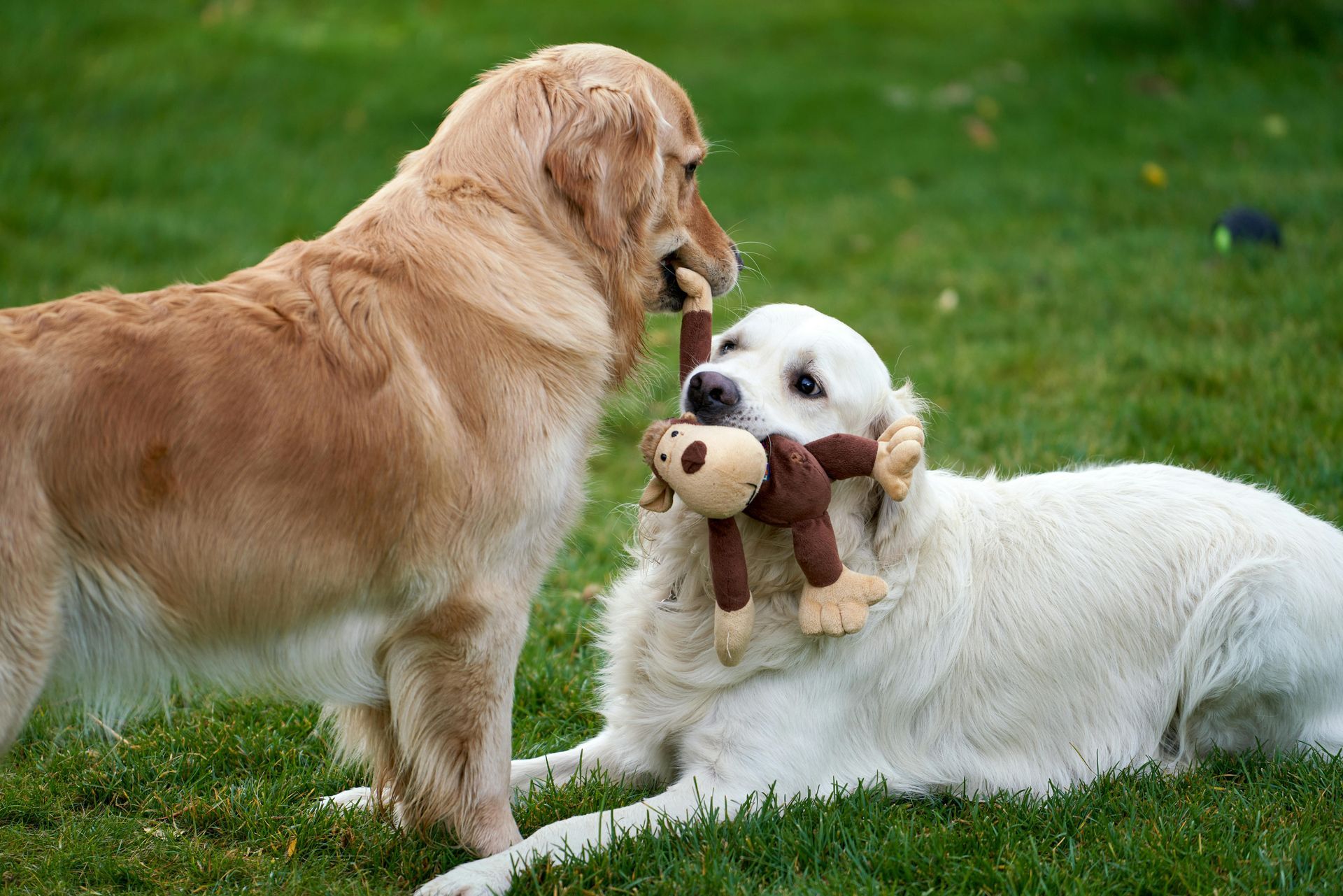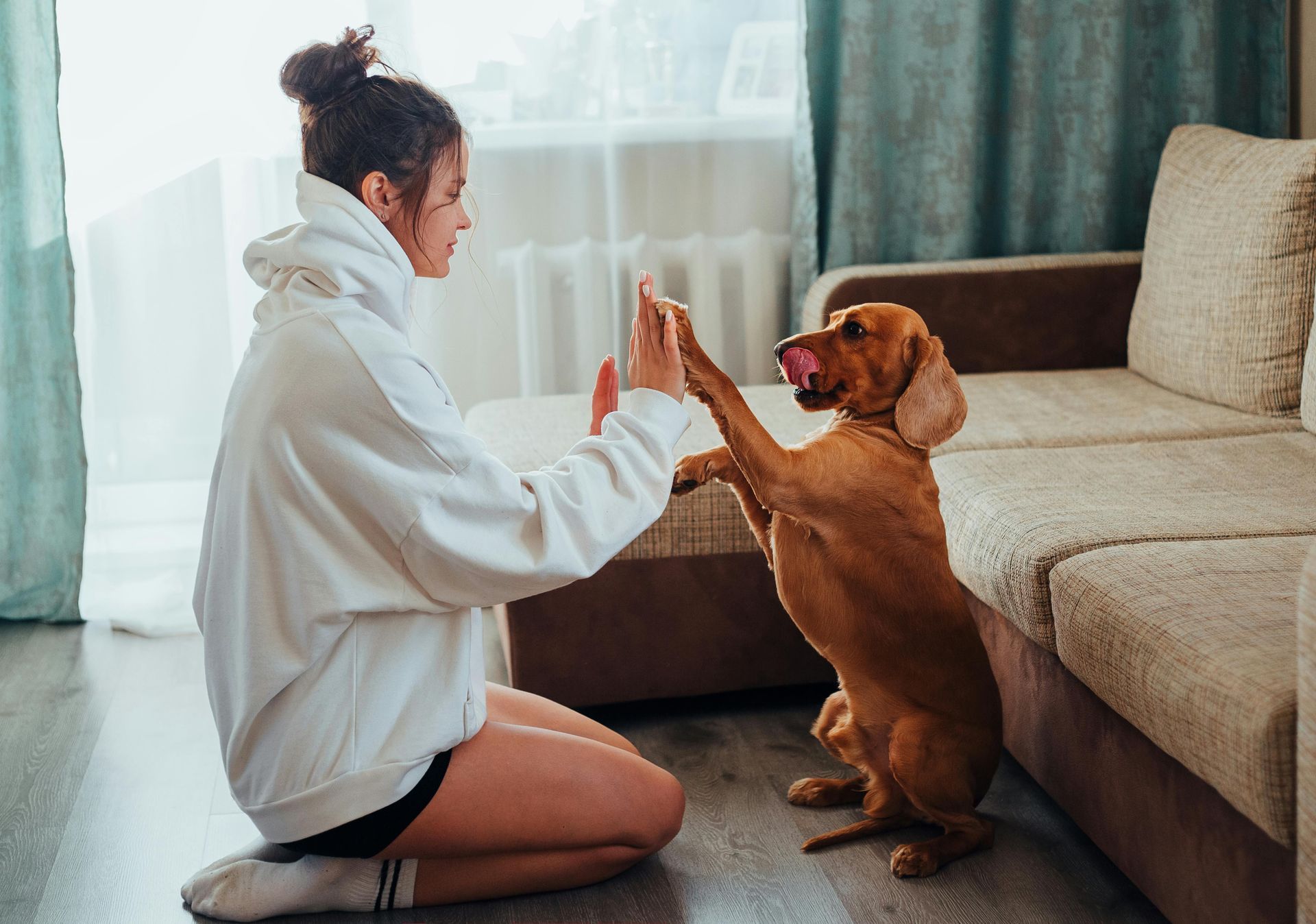Royal Library
Creating Harmony and Balance

Having more than one dog at home can be a lot of fun, but it also comes with its challenges. If you're looking for some tried-and-true strategies for managing multiple dogs, you're in the right place. From organizing feeding times to coordinating play sessions, this guide covers practical tips and techniques to help you keep things running smoothly. You'll also learn how to handle different situations and see the benefits of a well-managed multi-dog household.
Establishing Leadership and Structure
- Clear Leadership: Dogs thrive on structure and clear leadership, which is all about providing guidance and creating a predictable environment. Establishing yourself as the pack leader involves setting boundaries and being consistent with rules, without resorting to dominance or punishment. Instead, focus on positive reinforcement and modeling calm, confident behavior. This approach reduces anxiety, strengthens your bond with your dogs, and promotes good behavior, making it easier to manage multiple dogs in a harmonious household.
- Consistent Routine: Implementing a consistent daily routine helps manage multiple dogs effectively. Schedule feeding times, potty breaks, playtime, and training sessions at the same times each day. Consistency provides predictability, which reduces anxiety and promotes harmony.
Feeding Schedules and Techniques
- Separate Feeding Areas: Feed each dog in a separate area to prevent competition and food aggression. Use baby gates, crates, or different rooms to keep feeding times calm and orderly.
- Supervise Meals: Supervise your dogs during meal times to ensure that each dog eats their own food and there are no conflicts. Remove food bowls once they’ve finished eating to prevent resource guarding.
Playtime Coordination
- Supervised Play: Supervise playtime to ensure that all dogs are playing nicely and not getting too rough. Intervene if play becomes too intense and provide breaks to prevent overstimulation.
- Individual Attention: Spend one-on-one time with each dog to strengthen your bond and ensure they receive individual attention and mental stimulation. This prevents jealousy and reinforces positive behavior.
Training Multiple Dogs
- Group Training: Train your dogs together for basic commands and group behaviors, such as sitting before meals or waiting at the door. This reinforces their roles within the pack and promotes cooperative behavior.
- Individual Training: Spend time training each dog individually to address specific needs and reinforce personal attention. This helps prevent competition and ensures that each dog progresses at their own pace.
Managing Conflicts and Behavior
Recognizing Signs of Tension: Be vigilant for signs of tension, such as growling, stiff body language, or prolonged staring. Address conflicts immediately by calmly separating the dogs and redirecting their attention to a positive activity.
Creating Safe Spaces: Provide each dog with their own safe space, such as a crate or designated area, where they can retreat and relax. This helps prevent conflicts and ensures that each dog has a place to unwind.
Applying Management Techniques in Different Scenarios
- Travel: Traveling with multiple dogs can be challenging. Use crates or seat belts to ensure their safety during car rides. Plan for regular breaks to allow your dogs to stretch, relieve themselves, and stay comfortable.
- Visits and Socializing: When visiting new places or introducing your dogs to new people or animals, keep interactions calm and controlled. Use leashes and supervise closely to ensure positive experiences and prevent conflicts.
- Exercise and Enrichment: Provide regular exercise and mental enrichment for all your dogs. Walks, playtime, and interactive toys keep them physically and mentally stimulated, reducing the likelihood of behavioral issues.
Benefits for the Owner
- Reduced Stress Implementing effective management techniques reduces stress for both you and your dogs. A structured routine and clear boundaries create a harmonious household.
- Stronger Bonds Spending quality time with each dog individually strengthens your bond and promotes positive behavior. Training sessions and playtime build trust and cooperation.
- Improved Behavior Consistent routines, clear leadership, and regular training result in well-behaved dogs. Managing multiple dogs effectively prevents conflicts and promotes a peaceful environment.
By following these strategies, you can manage multiple dogs successfully and create a harmonious household. Remember, consistency, patience, and positive reinforcement are your best tools for success. Happy dog parenting! 🐾



